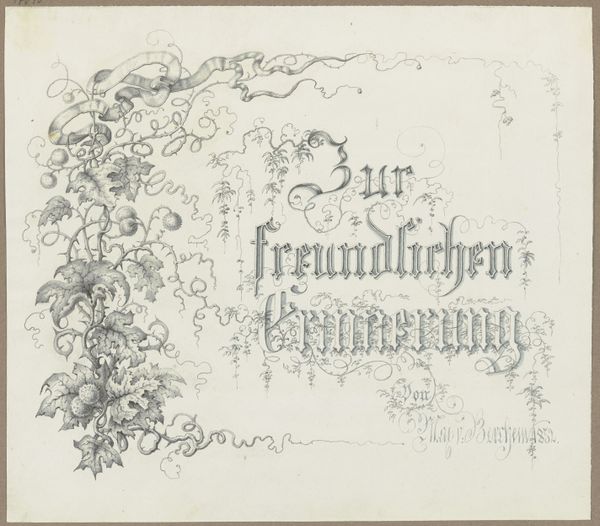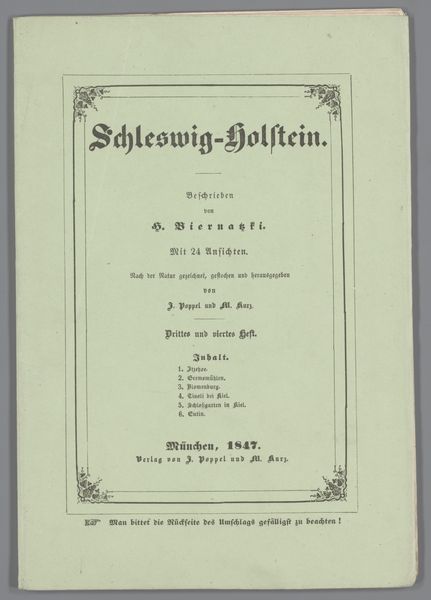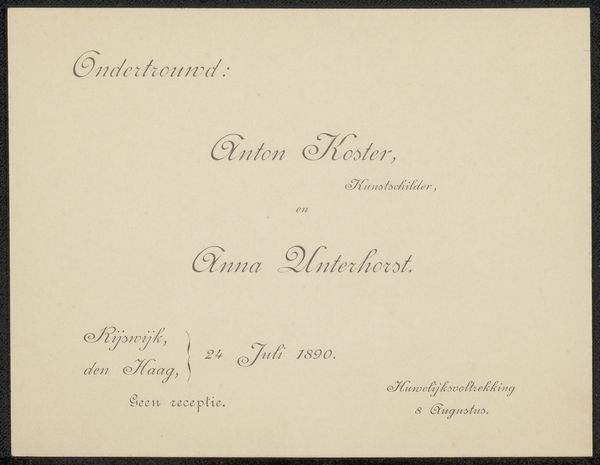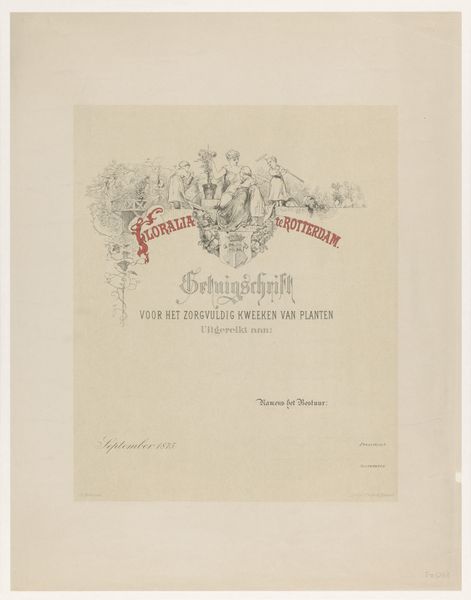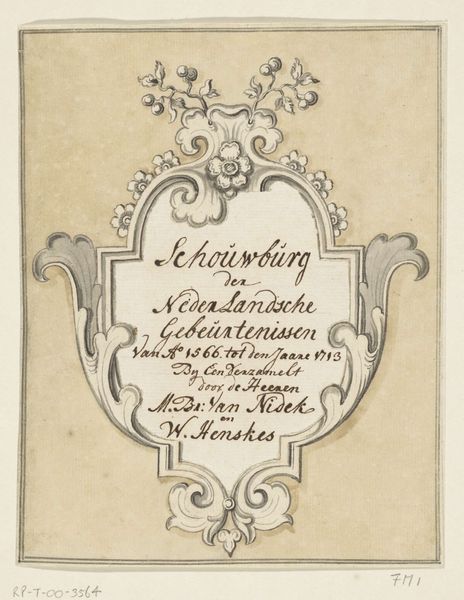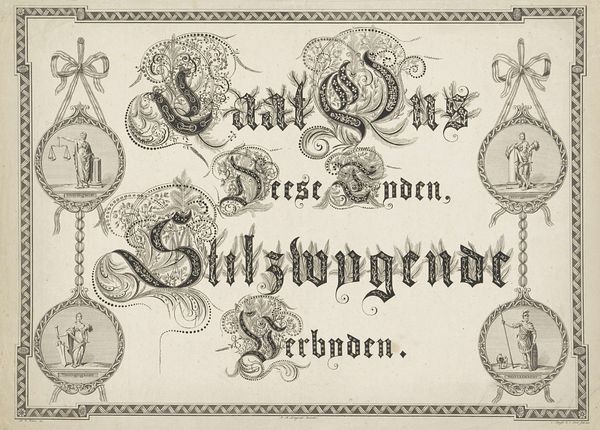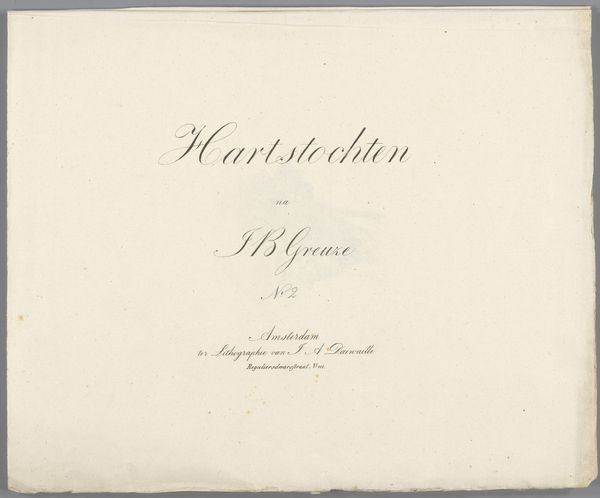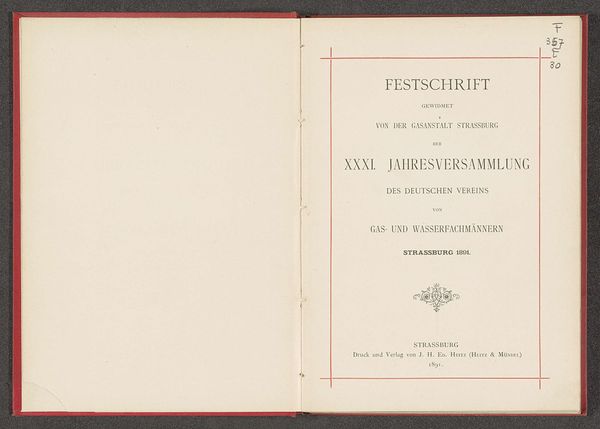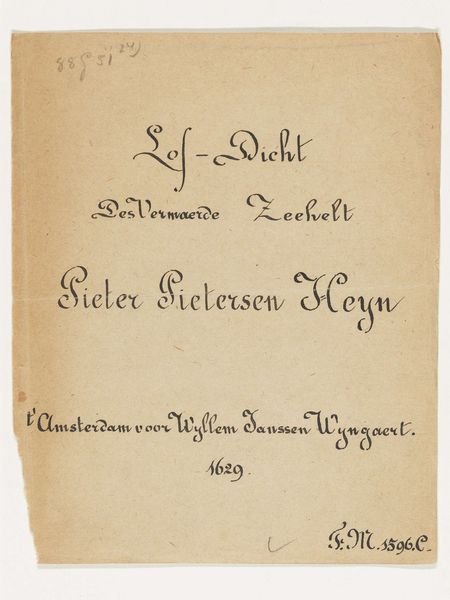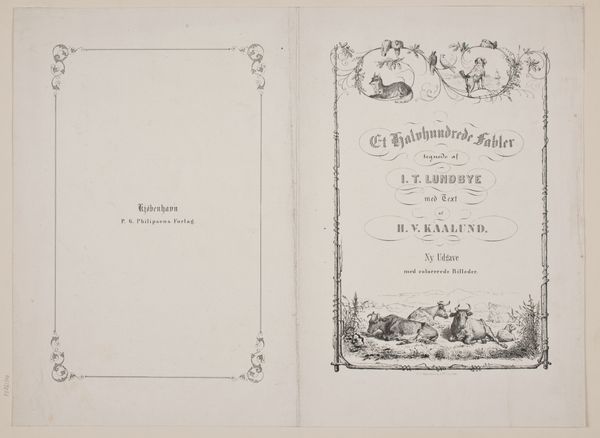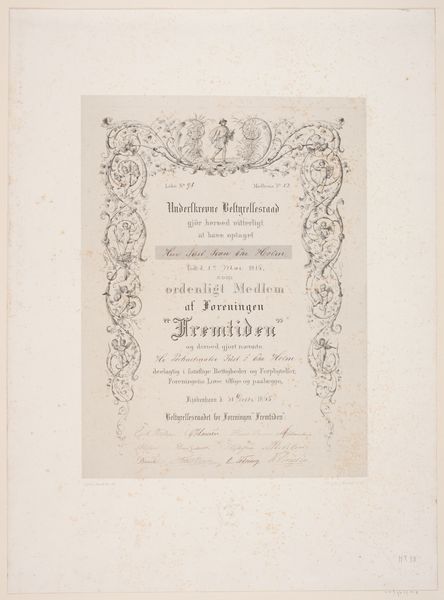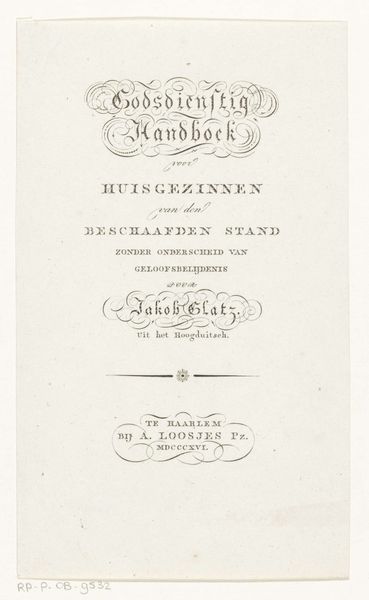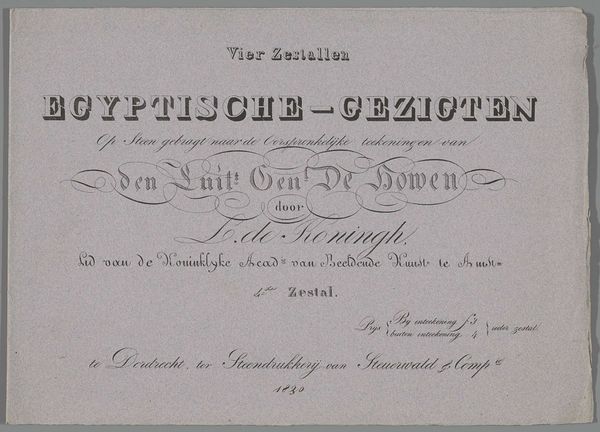
graphic-art, print, typography, engraving
#
graphic-art
#
neoclacissism
# print
#
typography
#
engraving
Dimensions: height 376 mm, width 604 mm
Copyright: Rijks Museum: Open Domain
Curator: Looking at this, I’m immediately drawn to its formal austerity, its muted palette, and the stark functionality of the typography. Editor: Indeed. Here we have "Titelblad voor de Facsimile van de Unie van Brussel, 1577" created in 1827 by Daniël Abrahams. The work is an engraving, a print and features typography. Curator: So, the original document being a record of the Union of Brussels, signed in 1577, a pivotal moment where various provinces of the Netherlands united against Spanish rule. This title page, though produced centuries later, invites us to reflect on the legacies of colonialism and resistance. How did the printing itself mirror power dynamics? Editor: Good question. The medium speaks volumes: engraving. A labor-intensive process—each line meticulously etched—reflecting the slow, deliberate spread of information in a pre-digital age, where craft controlled what knowledge became available to the broader world, so what of the engraver's role? Curator: Well, Abrahams positions the making of this union, its potential strength, within a burgeoning nationalist sentiment that demanded to be remembered. His decision to present it with a Neoclassical design evokes a sense of historical legitimacy. It also participates in debates around how we visually construct and sustain national identity through printed materials. Editor: Yet, considering the political tumult surrounding the era of its making, does its creation itself mark labor relations amid a shifting social fabric and burgeoning printing industries? Did its distribution help spur political conversations around labor at all, however slightly? Curator: Yes, these printed texts were vital to creating a shared civic identity, and this craft process was at its core. But that identity was still limited and gendered; access was tied to both economic status and ideas regarding gender. Editor: I can certainly appreciate how viewing the print via these frameworks generates discussion about how materials themselves participate in making, unmaking, and negotiating ideas regarding nationality. Thank you for your perspectives! Curator: And thank you, because situating works of art such as this within broader socio-economic patterns reveals dynamics too easily passed over, granting the present an opportunity for necessary awareness.
Comments
No comments
Be the first to comment and join the conversation on the ultimate creative platform.

